I generally don’t do a lot of work on new trees until I have a good idea what shape the roots are in. I’ll water, fertilize and maybe do some cutback but hold off on wiring until I know the tree is strong enough to recover from the work.
When trees are healthy and have been well-cared for, my usual routine includes waiting until the next repotting season before looking at the roots. When trees are in poor soil or poor health, I repot the first chance I get.
Just after I wrapped up this year’s repotting season, I brought a number of new trees into the garden – a mix of coniferous, deciduous and broadleaf evergreen varieties.
By standard measures, it’s “too late” to repot these trees as all of them have produced spring growth. It’s not, however, too late for a more gentle repotting that will help ensure good percolation when I water.
Below is a coast live oak that leafed out well this spring. There are plenty of new shoots and the leaves look healthy. As for the soil, percolation is good but the particles had broken down some time ago. I wanted to take a closer look at the roots so I decided to repot.
Coast live oak – about 30 years from acorn
I removed soil from the perimeter of the rootball but left the center section alone.
After reducing the rootball
Were it winter or early spring, I’d remove more soil and consider bare-rooting up to half of the rootball. Because the tree has started growing, I opted to keep the rootball intact.
Lower trunk and rootball
I planted the tree in a mix of akadama, lava, and pumice, one part each. I also cut back some of the longer branches and removed all dead leaves and twigs. Although I like the way trees look after removing dead foliage, my primary reason for doing so is to set a baseline from which I can better track how the tree responds to the repotting.
After repotting
I had so much fun with this repot that I decided to do another.
Coast live oak – also about 30 years from acorn
This tree wasn’t in good health like the previous oak. The leaves were smaller and covered with spots – signs of fungus. Plus, the new shoots were relatively short considering how good the shoots looked on the first tree. Wanting to get the tree on a better trajectory, I removed more soil from this oak to learn more about what might be keeping it from being healthier. What I found were two patches of field soil in which no roots were growing and a big gap occupied by a clan of sow bugs. I cleared away the bugs and old soil and proceeded with the repotting.
Root-work complete
This is definitely more root work than I’d planned on doing for this time of year, but I’m curious to learn more about repotting oaks out of season. Having purchased several of similar age and health, I can take different approaches and see how each responds. If there are any patterns, I may have some good data points for future experiments.
Apart from removing more soil than I expected, the rest of the repotting was straightforward.
Repotting complete
Both trees are in full sun for the time being as the weather has been mild lately. If it heats up much before the trees have a chance to root out, I’ll likely move them to a sheltered spot in the garden. In the meantime, I’ll make sure the trees get plenty of water. If the foliage looks good a month from now, I’ll start fertilizing and hold off on any more work for the rest of the year.
Subscribe to Bonsai Tonight
New Posts Delivered Every Tuesday and Friday

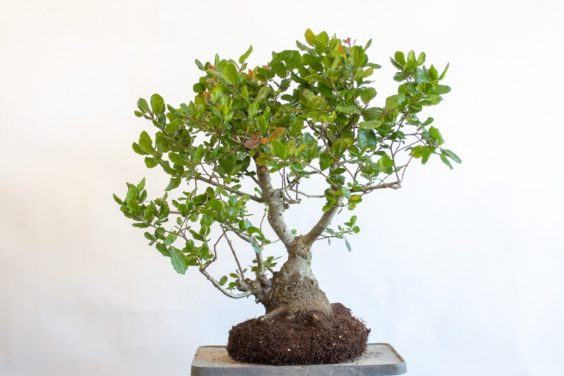
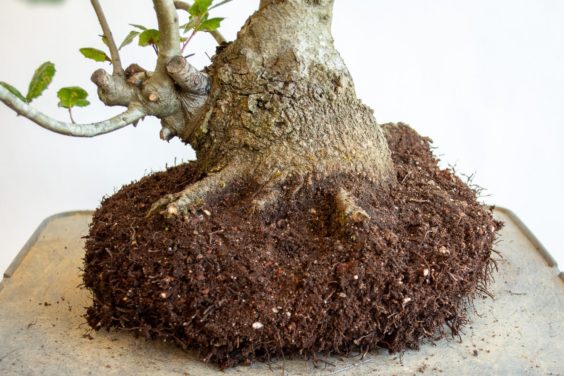
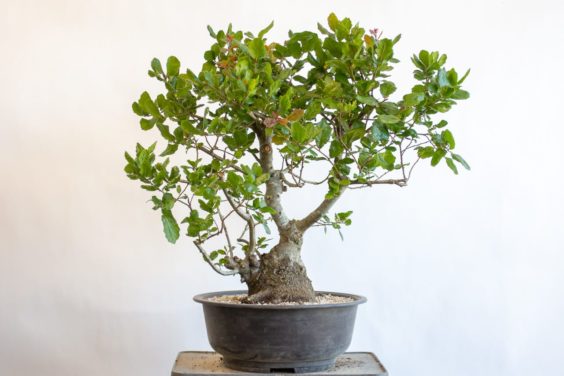
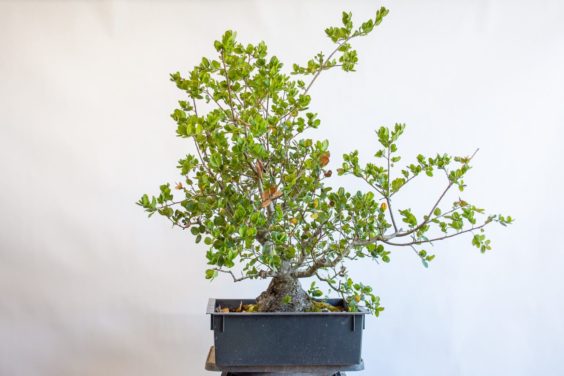
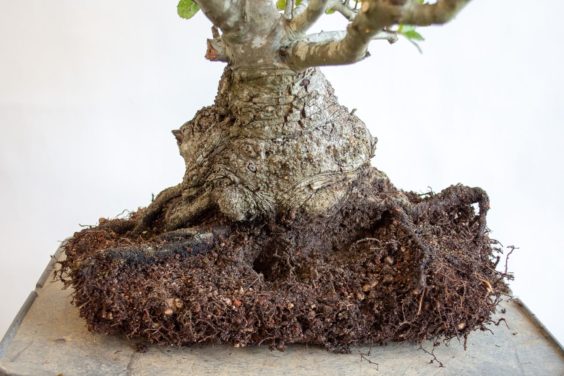
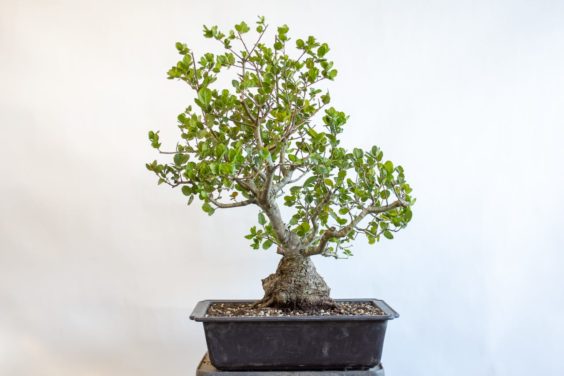
Alain K. says
I don’t know much about conifers, and nothing about oaks, but I sometimes repot deciduous like hornbeam or J. maples when they’re in full leaves. I never do it when it’s too hot, too windy or too dry, but if the weather forecast shows about 10 days between 18 and 22 C (64.4 – 71.6 F) and preferrably a few showers of rain, I do it with almost 100% rate of success. I just trim the longer roots, even cut into the root ball like wedges if there are enough fine roots close to the base – see what I mean, “star-shaped cutting”, and add some free-draining mix without removing all the old soil.
I read an article years ago on a Japanese nurseryman who repots his maples in June and decided to try it. It worked.
I did it on an ‘Orange Dream’ – one of the earliest ones to leaf out, on April 15 and it’s perfectly healthy, and on a ‘Hana Matoi’ last week.
http://krizic.eu/bonsai/photos/_data/i/upload/2018/04/15/20180415144738-c141e53f-me.jpg (must update the photos…)
http://krizic.eu/bonsai/photos/_data/i/upload/2018/05/04/20180504165531-a1ffd28d-me.jpg
Charlie Mosse says
I have done the out of season re-potting on many species of trees. Just waited until the current flush of growth has hardened off, especially for broad leaf evergreens and deciduous. Followed the same routine as Alain and Jonas. Works great and is good to know how handle re-pots out of season as for emergency re-pots for whatever reason -root rot, dumped over pot, impossible to water properly, etc. Glad to see this published by a professional; this is good info for all to know.
Yaroslav Pronin says
As far as I understand all 30 years they were in the container from the very beginning? Fantastically slow thickening.
Jonas Dupuich says
Good question Yaroslav. I’m not sure if these trees were entirely container grown or if they developed in the ground at one point. In general, oaks can thicken quickly when the growth is vigorous. Will provide an update if I find out.